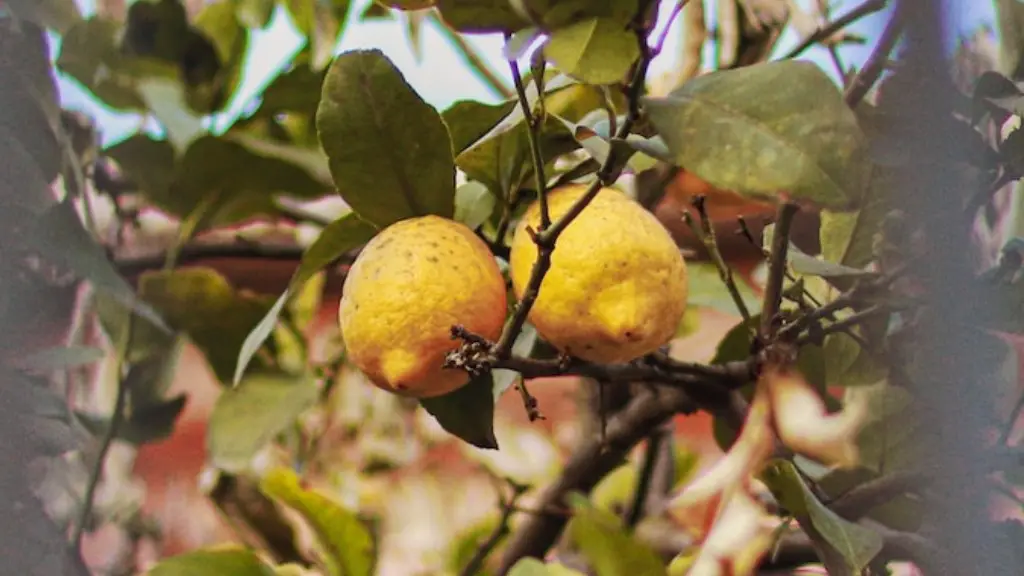Apple tree buds are small, immature flower-like structures that are formed in the spring. They develop on the tips of new shoots, in the axils of leaves and appear as swollen, light-green or pinkish protrusions. Utilizing a magnifying lens will make it easier to spot these delicate buds on apple trees.
Apple tree buds can range in size from half of a millimeter to 15 millimeters, depending on the species of the tree. These buds are encased in protective scales generated from the previous year’s growth, which shield the young bud against extreme weather changes.
Within the protective scales, the apple tree will produce two distinct buds. The terminal bud is a solitary bud that is found at the apex of a branch or twig. It is typically larger than lateral buds and produces the majority of apple tree growth. Conversely, the lateral buds flanking the terminal bud will produce short shoots that will eventually become lateral branches.
As the bud begins to take shape during the beginning of spring, yellow-green leaves break through the protective scales between the petals of the flowers. This transformation of colors within the buds will lead to the apple tree beginning to blossom within the later stages of spring.
Bud development is a crucial element during the growth process of fruit trees such as apples. Therefore, horticulturalists and gardeners should assess the health of the buds prior to any manipulation of the tree, in order to ensure that the new shoots, lateral branches and flowers will remain intact and healthy.
Types of Apple Tree Growth
Different types of apple trees will reveal unique characteristics in their growth and composition of buds. The upright, vase-shaped tree and spur-bearing trees are two of the most common types, and will produce buds of unique shapes and sizes. The upright, vase-shaped tree is known to produce upwardly-oriented buds and long shoots, whereas the spur-bearing trees will develop dense overlapping clusters of buds at the tip of its twigs.
Upright and vase-shaped trees tend to yield a higher quality of apples compared to spur-bearing trees. As a result, some horticulturalists recommend pruning the shoots on spur-bearing trees to obtain larger and higher quality apples.
Pruning apple trees typically takes place in late winter; however, it can be done in the summer as well. The intention of pruning is not just to let in more sunlight, but to produce larger and plumper apples. Apple tree pruning is more time consuming than other fruit tree pruning, and requires patience in order to achieve aesthetically pleasing outcomes.
It is crucial to inspect apple tree for signs of disease and pests yearly, as sudden changes within the branches and bark of the tree could indicate a negative issue within the tree, such as the presence of dreaded apple scab and powdery mildew.
Apple Tree Diagnosis and Treatment
To diagnose potential pest and diseases, one must observe apple tree buds both before and after the blossoming phase. This is because the same symptoms may present in a variety of issues, and each condition may have a different treatment accordingly.
For instance, symptoms like curled leaves, discoloring, growth reduction and stunting can be caused by either an excess or a lack of water in the soil surrounding the tree. To determine whether water is the culprit, experts recommend digging around the tree’s roots and examining the soil’s moisture content.
If the soil is dry, it is important to rehydrate it thoroughly. If the soil is too moist, however, one must consider changing the conditions of the soil in order for the tree to receive an adequate drainage system.
Robust and health apple trees can easily be identified whenever buds swell in the spring. Treatment options such as pruning and the application of fungicides should be considered in order to maintain the tree’s overall health.
Apple Tree Blossoming
By the end of the spring, the buds of the apple tree will break forth in a sea of pink or white blossoms that give off a delightful aroma. These flowers will later peel back to create the small and familiar green fruits that we all know and love.
It is immediately after the blossom stages that the apple tree is vulnerable to developing pest and disease issues. For this reason, some apple growers apply thin layers of clay to the ground around the tree to ensure that any moisture that the tree may have requires stays below the surface.
The size and quality of the apple tree’s fruits are determined largely by the flowers’ pollination. Bees play a key role in the pollination process, as the presence of these insects within an orchard drastically increases the resulting fruits’ size and abundance.
For this reason, many horticulturalists and farmers alike crop-dust their orchards with a special sugar-water paste, in order to attract bees to their apples. This practice, also known as ‘apple blossom nectar’ is used by many to increase their apple’s size, quality and quantity.
Reasons to Plant an Apple Tree
It is clear why the apples has become one of the most common fruits found in the world. Apples are incredibly easy to grow, and expansive in their varieties. There are over 7500 known types of apples that span different sizes, shapes and colors.
Growing an apple tree requires minimal effort, as it is often self-fertilizing, and is low maintenance when it comes to pest and disease control. Lastly, the apple tree’s ability to thrive in many soil types and climates makes it suitable for many different environments.
Apple trees tend to be some of the hardiest trees, and can often withstand freezing temperatures and snow. For this reason, apple trees are often found in colder climates such as Scandinavia, Canada, and the northern United States.
Apple tree’s produce an abundant amount of fruits, making it ideal for small-scale orchards and larger scale plantations. The large size of the fruits makes them easily transportable, ensuring that they can reach a large variety of markets.
Apples are incredibly healthy, as they are packed with vitamins, minerals, and anti-oxidants that have numerous benefits for the human body. Lastly, their wide range in color, sizes and types make them an attractive addition to many dishes and meals.





